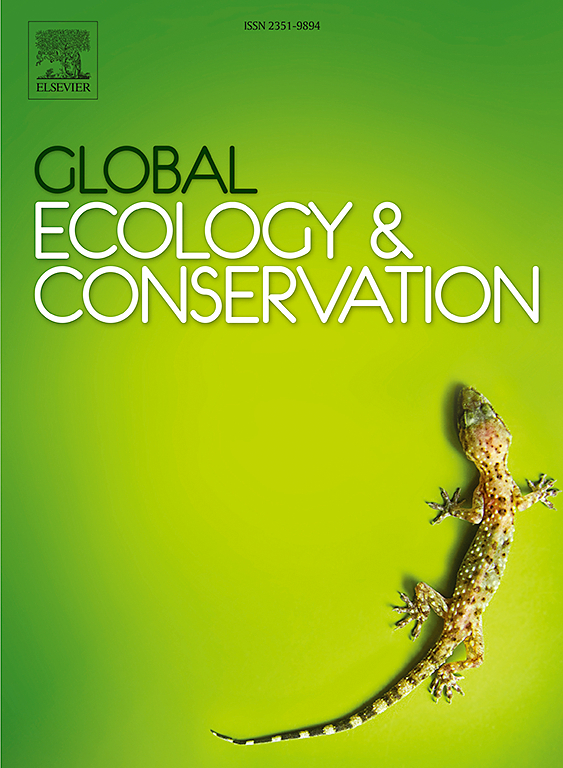Genetic variation and structure shaped by recent population fragmentation in the boreal conifer Thuja koraiensis: Conservation perspectives
IF 3.5
2区 环境科学与生态学
Q1 BIODIVERSITY CONSERVATION
引用次数: 0
Abstract
A plant species has historically experienced repeated cycles of habitat connectivity and isolation, which have played a crucial role in increasing genetic diversity and promoting long-term survival. Therefore, understanding these dynamics is essential for developing effective conservation strategies. Thuja koraiensis is an endangered coniferous shrub inhabiting the mountain summits of the Baekdudaegan, a critical ecological axis in northeastern Asia. We used a genome dataset (242 SNPs) generated by the MIG-seq (Multiplexed ISSR Genotyping by Sequencing) method to evaluate the genetic diversity and structure of T. koraiensis populations across their entire distribution range. T. koraiensis exhibited a population history, with range expansion during glacial periods and contraction during interglacial periods. During the Last Glacial Maximum (LGM), genetic connectivity among populations was high, but post-LGM habitat fragmentation led to increasing isolation. This shift resulted in a rapid decline in effective population size and severe bottlenecks across all populations. Consequently, the genetic variation in current populations exhibits a geographically random pattern. Nevertheless, no signs of inbreeding or significant imbalances in genetic diversity were detected among populations. Therefore, we propose that conservation strategies should not solely focus on increasing genetic diversity or enhancing gene flow among populations but rather reflect the species’ historical demographic dynamics and aim to conserve the unique genetic characteristics of each population.
北方针叶树近期种群破碎形成的遗传变异和结构:保护观点
植物物种在历史上经历了栖息地连通性和隔离性的反复循环,这在增加遗传多样性和促进长期生存方面发挥了至关重要的作用。因此,了解这些动态对于制定有效的保护策略至关重要。红木是一种濒临灭绝的针叶灌木,栖息在东北亚重要的生态轴——白头大干的山顶上。本研究利用MIG-seq (Multiplexed ISSR Genotyping by Sequencing)方法生成的242个snp基因组数据集,对整个分布范围内的koraiensis群体的遗传多样性和结构进行了评估。红杉的种群历史表现为冰期范围扩张和间冰期范围收缩。末次盛冰期种群间的遗传连通性较高,但后期生境破碎化导致种群间的隔离度增加。这一转变导致有效人口规模迅速下降,所有人口都面临严重瓶颈。因此,当前种群的遗传变异呈现出一种地理随机模式。然而,在种群中没有发现近亲繁殖或遗传多样性显著失衡的迹象。因此,我们建议保护策略不应仅仅关注增加遗传多样性或增强种群间的基因流动,而应反映物种的历史人口动态,并以保护每个种群的独特遗传特征为目标。
本文章由计算机程序翻译,如有差异,请以英文原文为准。
求助全文
约1分钟内获得全文
求助全文
来源期刊

Global Ecology and Conservation
Agricultural and Biological Sciences-Ecology, Evolution, Behavior and Systematics
CiteScore
8.10
自引率
5.00%
发文量
346
审稿时长
83 days
期刊介绍:
Global Ecology and Conservation is a peer-reviewed, open-access journal covering all sub-disciplines of ecological and conservation science: from theory to practice, from molecules to ecosystems, from regional to global. The fields covered include: organismal, population, community, and ecosystem ecology; physiological, evolutionary, and behavioral ecology; and conservation science.
 求助内容:
求助内容: 应助结果提醒方式:
应助结果提醒方式:


